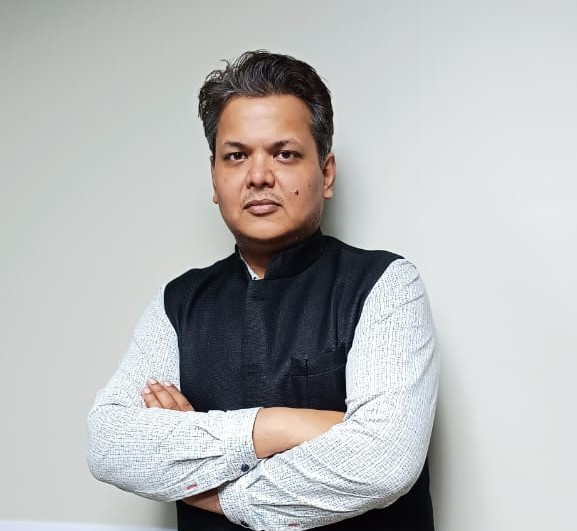
Orthopedician & Joint Replacement Surgeon
MBBS, MS, Orthopedic Surgeon, 17+ Years of Experience

Orthopedician & Joint Replacement Surgeon
MBBS, MS, Orthopedic Surgeon, 5+ Years of Experience

Orthopedician & Spine Surgeon
MBBS, MS, Orthopedic Surgeon, 5+ Years of Experience
At Manas Hospital, we understand the importance of mobility and musculoskeletal health in maintaining an active and fulfilling lifestyle. Our Department of Orthopedics, Joint Replacement & Spine Surgery is dedicated to providing exceptional orthopedic care, specializing in joint replacement surgeries, spine surgeries, and comprehensive treatment for orthopedic conditions.
Our mission is to improve the quality of life for patients with orthopedic conditions through excellence in patient care, education, and research. We are committed to providing personalized, evidence-based treatment plans while prioritizing patient comfort, safety, and satisfaction.
In short, the Orthopedic department at Manas Hospital, Noida takes care of all kinds of Orthopaedic & trauma situations. The 24 hour Accident and Emergency (A & E) department receives and takes care of all major and minor trauma and other Orthopedic emergencies. The Orthopedic department is managed by consultants, each of them having many years of experience in various fields of Orthopedic surgery.
Orthopedic services include :
If you or a loved one requires expert orthopedic care, joint replacement surgery, or spine surgery, we invite you to schedule a consultation with our Department of Orthopedics, Joint Replacement & Spine Surgery at Manas Hospital, Noida. Our experienced orthopedic surgeons are here to provide you with compassionate, personalized care to support your musculoskeletal health and well-being. Contact us today to book your appointment. We look forward to serving you!




Bursitis is an inflammation or irritation of a bursa, which is a fluid-filled sac located
around joints. Bursitis causes a reduction in or a loss of motion at the affected joint.
Bursitis typically occurs in the heel, hip, knee, shoulder and thumb.
Cartilage is a soft, rubbery, gel-like coating on the ends of bones, where they articulate, that protects joints and facilitates movement.
A ligament is an elastic band of tissue that connects bone to bone and provides stability to the joint.
A tendon is a band of tissue that connects muscle to bone.
Tendonitis, medically spelled tendinitis, is an inflammation or irritation of a tendon.
Chronic strain, overuse or misuse of a tendon leading to a repetitive stress injury, or a
serious acute injury can lead to a weakness, tear, or swelling of the tendon tissue, resulting in pain and stiffness near the tendon. Tendonitis usually occurs in the elbow, hip, knee, shoulder, thumb and wrist but can occur in any tendon.
The general rule of thumb is to use ice in the acute stage of an injury (within the first
24 – 48 hours) or whenever swelling is showing. Ice helps to reduce inflammation and swelling by decreasing blood flow to the area that is injured. The general guideline is to apply ice indirectly (not directly on the skin) for 20 minutes, remove the ice for at least 20 minutes, and repeat as necessary.Heat is used to increase blood flow, which helps promote pain relief after inflammation and swelling subside. Heat is also used to assist in warming muscles up prior to exercise, any physical activity, or physical therapy.
Arthroscopic surgery is a surgical procedure that is commonly performed to diagnose and treat problems within the joint. By using high-tech cameras, the orthopaedic surgeon inserts a small instrument, called an arthroscope, into the joint.The arthroscope contains a fibre optic light source and small television camera that allow the surgeon to view the joint on a television monitor and diagnose the problem,determine the extent of injury, and make any necessary repairs.
A bone density test is used to diagnose osteoporosis, which is a disease that causes weakening of the bones that can ultimately result in fractures. In the past,osteoporosis could only be detected after a person’s bone broke. However, by using a bone density test, it is possible to know one’s individual risk of breaking bones before one breaks.
A bone density test uses X-rays to measure the amount of calcium and other bone mineral packed into the segment of bone. Common areas that are tested using a bone density scan include the spine, hip, and forearm.
Corticosteroids, more commonly referred to as cortisone, is a steroid that is produced in the body naturally. Synthetically produced can also be injected into soft tissues and joints to help decrease inflammation.
While cortisone is not a pain reliever, pain may diminish as a result of reduced inflammation. In orthopaedics, cortisone injections are commonly used as a treatment for chronic conditions such as bursitis, tendonitis (medically referred to as tendinitis), and arthritis to reduce swelling, pain, and joint stiffness.
A computed tomography (CT) scan, also known as CAT scan, produces images that are similar in detail and in quality to an MRI. However, the CT scan takes a 360-degree picture of internal organs and the spine and vertebrae. CT scans provide cross-sectional views of the body and provide clearer imaging than an MRI.
Joint replacement surgery is a surgical procedure that is performed to replace an arthritic or damaged joint with a new, artificial joint, called a prosthesis. Joint replacements can be performed on every joint in the body, but most commonly performed in the knee, hip, shoulder, and elbow.
Joints contain cartilage, a soft, rubbery gel-like coating on the ends of bones, where
they articulate, that protects joints and facilitates movement and over time, or if the
joint has been injured, the cartilage wears away and the bones of the joint start rubbing together. As the bones rub together, bone spurs may form, and the joint becomes stiff and painful. Most people have joint replacement surgery when they can no longer control the pain with medication and other treatments and the pain is significantly interfering with their lives.

Never thought Manas Hospital could be such a support in my bad times. Got a fractured leg treated here. Thank you for all the support.

Thank you for saving my mother’s life. Highly recommended for emergencies near city centre area, Noida

Best Hospital, very affordable, patient centric, Dr.Naman is very good. Highly recommended for any kind of General Diseases and Maternity and Child Care. Thank you for all the support!